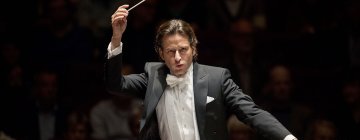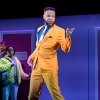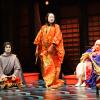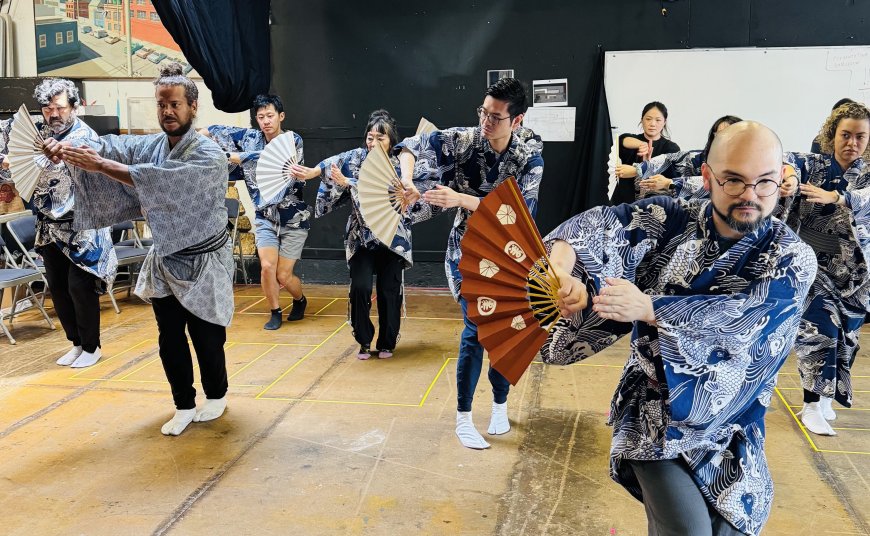
San Francisco’s large and prominent Asian American arts community is mobilizing to produce an ambitious version of Pacific Overtures at Brava Theater May 30 – June 15.
The 1976 musical by Stephen Sondheim and book writer John Weidman is about Commodore Matthew Perry’s “opening of Japan” to American trade and military presence in 1853–1854. Pacific Overtures was novel in its time for telling history from the Japanese point of view, a trend that continues in American media and culture today. Last year’s Shōgun TV series (created by Rachel Kondo and Justin Marks) adopts a similar perspective.
Kunoichi Productions is the organization putting on this San Francisco run of the musical, and stage director Nick Ishimaru said Pacific Overtures is just one of the “original plays with Japanese aesthetics” that the company is committed to. The presenter has a broader goal of “breaking traditions, taboos, and gender/cultural assumptions,” he explained, “casting new light on old ideas or old stories and engaging and challenging our audiences artistically, intellectually, [and] politically through the fusion of different art forms.”
Among Kunoichi Productions’ many specialties, Ishimaru cited “poetry, music, movement, visual arts, storytelling, and puppetry.”
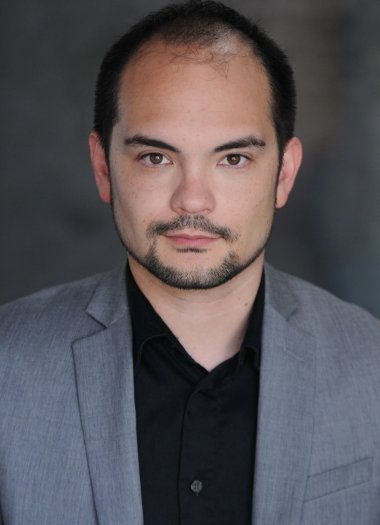
While Pacific Overtures is one of Sondheim’s less frequently performed musicals, it has nonetheless enjoyed multiple productions in the Bay Area over the years. This may be due to the fact that going back centuries now, Northern California has been a vital crossroad for East-West cultural exchange.
For proof of this ongoing dialogue, look no further than the Asian Art Museum of San Francisco, Ali Akbar College of Music in Marin, Esalen Institute in Big Sur, and countless others. Philosopher Alan Watts landed in California in the 1950s, and the gamelan works of composer Lou Harrison started coming out of San Jose and Santa Cruz in the 1970s.
Ishimaru told SF Classical Voice that he has worked in the Japanese theater traditions of noh and kyōgen for some 15 years and has experience with kabuki and Nihon-buyō (Japanese dance) as well. He’s also spent more than 30 years in American musical theater. “So Pacific Overtures is the perfect opportunity to bring these worlds together,” he said.
The director described some of the “nods to Japanese concepts” in the musical, such as ma —loosely meaning “negative space,” or the Japanese tendency to leave endings and meanings implied rather than stated.
Staging this Sondheim musical is the “perfect synthesis of art with identity” for Ishimaru. “I have spent my life navigating Japanese and American cultural hybridity,” he said. “As an artist, my passion is bringing that exploration to the stage.
“We’re presenting this story as the children of a diaspora. We [phrase it this way], rather than saying we’re presenting this story through a ‘Japanese’ lens, because most of us aren’t culturally Japanese. Yes, some members of our team were born in Japan. Most of us were not. We are, for better or worse, American.
“We are exploring how we view, imagine, reconstruct, and even Orientalize our ancestral cultures, whether as descendants or transplants.”
Amid the usual production process of assembling a team, getting the rights, putting out a casting call, holding auditions, scheduling rehearsals, and fundraising — “So much fundraising!” Ishimaru said — the director emphasized that he was “strongly interested in performers who identified as Asian American.”
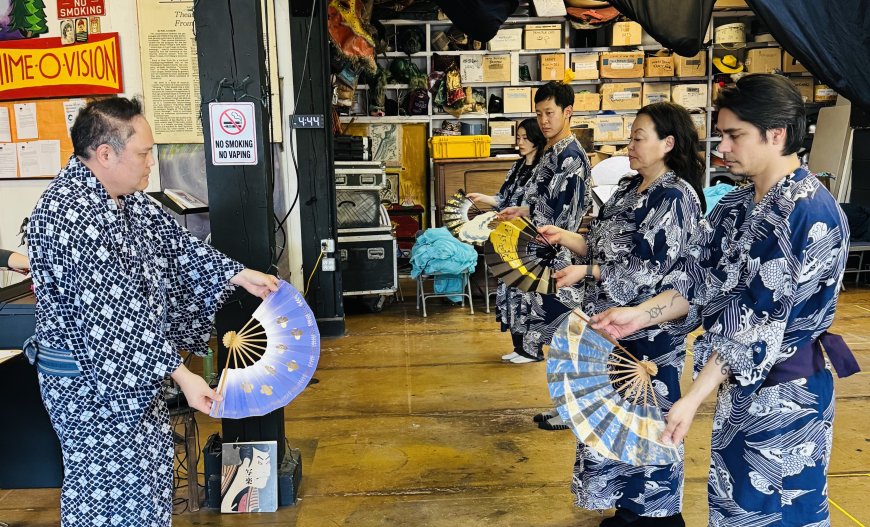
Kunoichi Productions defined this broadly, beyond the usual designation of East Asian. “We challenged that narrow definition by including all the peoples of East, South, and Southeast Asia and the Pacific Islands as part of the greater Asian American community,” Ishimaru explained. “The story might be culturally specific, but the themes, and the harms, are universally human.”
The authentic aesthetics and conventions depicted in the musical have proved important even in the rehearsal process, with the cast choosing to wear kimono and traditional Japanese toe socks called tabi.
As for the music, which Sondheim wrote in a quasi-Japanese harmonic style of parallel fourths and no leading tone (though he didn’t use the pentatonic scale, finding this too limiting), it’s some of the composer’s best, as Ishimaru pointed out.
Famously, Sondheim said that the Act 1 finale, “Someone in a Tree,” was his favorite song among his compositions.
The cast for Kunoichi Productions’ Pacific Overtures, in alphabetic order: Lawrence-Michael C. Arias as Lord Abe, Keiko Shimosato Carreiro as the Reciter, Edward Im as the Boy, Sarah Jiang as Tamate, Stephen Kanaski as the Warrior, Ryan Marchand as Commodore Perry, Eiko Moon-Yamamoto as the Shogun’s Mother, Nick Nakashima as Kayama, Vinh G. Nguyen as Manjiro, Mayadevi Ross as the Madam. Faustino Cadiz III and Julia Wright are swings.
